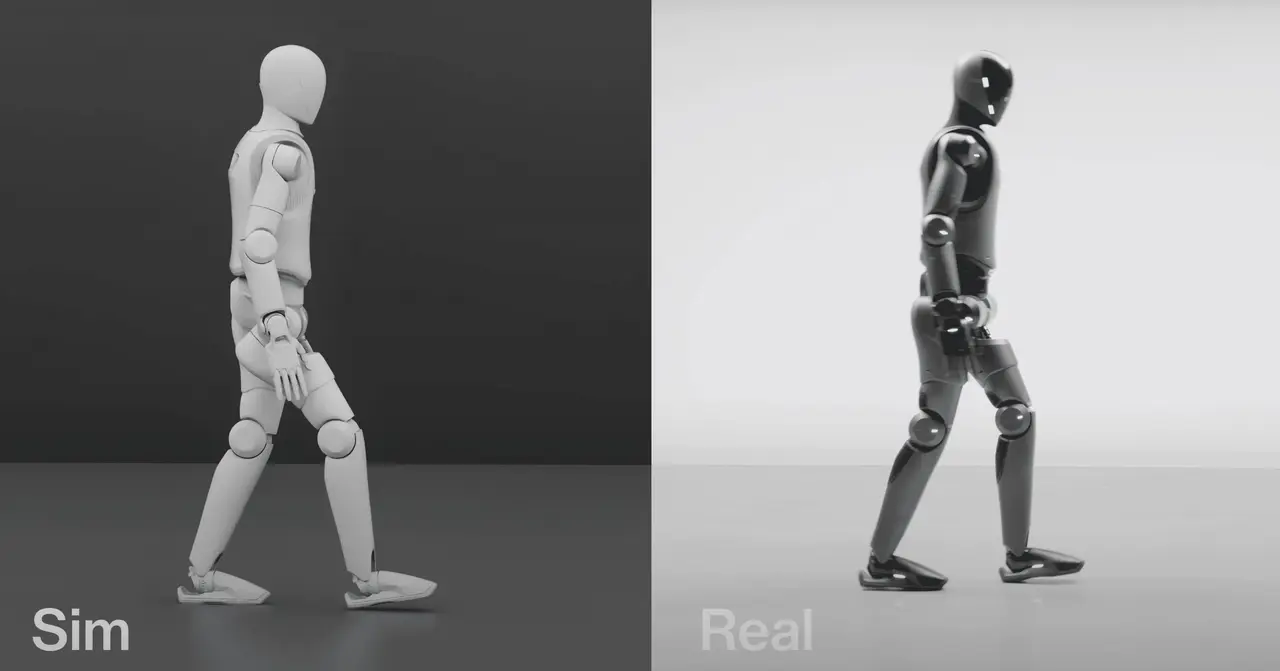Robots Mimic Human Memory to Boost Efficiency in Smart Factories
2 Sources
2 Sources
[1]
Robots cut 30% travel time using human-like memory in smart factories
The robots could distinguish between important, real-time obstacles and unnecessary, outdated information using this human-like forgetting method. "We have mimicked the social principle of forgetting unnecessary information while retaining only important information to enable efficient movement. This study is significant in that it shows how Physical AI is evolving to resemble human behavior," said Professor Kyung-Joon Park, the study author, in the press release on September 29. Autonomous Mobile Robots (AMRs) are vital for automation in various fields, including logistics and manufacturing. However, unexpected obstacles often hinder the robot's movement in these real-world operations. Robots are typically trained to adjust paths when they encounter obstacles, such as forklifts or misplaced cargo. However, the machine's inability to forget means it continues taking unnecessary detours even after the blockage is gone. Hence, it diminishes productivity in high-stakes environments like logistics centers and smart factories.
[2]
Robot navigation improves 30% by mimicking how humans spread and forget information
A research team has developed a new "Physical AI" technology that improves the efficiency of multi-robot autonomous navigation by modeling the spread and forgetting of social issues. This achievement is expected to become a key technology for boosting the productivity of autonomous mobile robots in logistics centers, large-scale warehouses, and smart factories. The work is published in the Journal of Industrial Information Integration. The study was led by Professor Kyung-Joon Park of the Department of Electrical Engineering and Computer Science and the Physical AI Center at DGIST. Autonomous mobile robots (AMRs) play a central role in automation across logistics and manufacturing sites. However, in real-world operations, unexpected obstacles, such as forklifts, work lifts, or unexpectedly placed cargo, often disrupt smooth movement. Until now, robots have reacted only to immediate situations and adjusted their routes accordingly, leading to unnecessary detours and delays, and ultimately, diminished productivity. To address this challenge, Professor Kyung-Joon Park's team applied a unique phenomenon of human society to robots. They focused on how certain events or issues spread rapidly and are then gradually forgotten. The team mathematically modeled this process and incorporated it into a collective intelligence algorithm for robots. Consequently, the robots were able to naturally forget unnecessary information, immediately share only the important details, and achieve more efficient cooperative navigation. In the actual experiments, the team utilized the "Gazebo simulator," which replicates a logistics center environment. The results showed that the new technology increased task throughput by up to 18.0% and reduced average driving time by up to 30.1% compared to conventional ROS 2 navigation. This demonstrates that robots are no longer merely machines that avoid obstacles; they are evolving into Physical AI systems that can comprehend social principles and operate autonomously. Another valuable feature of this technology is its ease of application. It can be implemented using only 2D LiDAR without additional sensors, and has been developed as a plugin compatible with the ROS 2 navigation stack. This implies that it can be applied directly to existing autonomous navigation systems without the need for complex equipment, enabling rapid deployment in industrial settings such as drone swarms, autonomous vehicles, and logistics robots. Particularly, it is expected to play a significant role in implementing cooperative autonomous navigation systems for smart city traffic management as well as large-scale exploration and rescue operations. Professor Kyung-Joon Park stated, "We have mimicked the social principle of forgetting unnecessary information while retaining only important information to enable efficient movement. This study is significant in that it shows how Physical AI is evolving to resemble human behavior."
Share
Share
Copy Link
A new 'Physical AI' technology improves multi-robot autonomous navigation by 30% by modeling how humans spread and forget information. This breakthrough enhances productivity in logistics centers and smart factories.

Revolutionizing Robot Navigation with Human-Like Memory
Researchers have developed a groundbreaking 'Physical AI' technology that significantly improves the efficiency of multi-robot autonomous navigation by mimicking how humans spread and forget information. This innovative approach has led to a remarkable 30% reduction in robot travel time within smart factories and logistics centers
1
2
.The Challenge of Obstacle Navigation
Autonomous Mobile Robots (AMRs) play a crucial role in automation across various industries, including logistics and manufacturing. However, these robots often face challenges when encountering unexpected obstacles such as forklifts, work lifts, or misplaced cargo. Traditional robot navigation systems would adjust their paths when encountering these obstacles but continue to take unnecessary detours even after the blockage was removed, leading to decreased productivity in high-stakes environments
1
.Mimicking Human Social Behavior
To address this issue, a research team led by Professor Kyung-Joon Park from the Department of Electrical Engineering and Computer Science and the Physical AI Center at DGIST focused on how certain events or issues spread rapidly in human society and are then gradually forgotten. By mathematically modeling this process and incorporating it into a collective intelligence algorithm for robots, the team enabled the machines to naturally forget unnecessary information while immediately sharing important details
2
.Related Stories
Impressive Results and Easy Implementation
The new technology was tested using the 'Gazebo simulator,' which replicates a logistics center environment. The results were remarkable:
- Task throughput increased by up to 18.0%
- Average driving time reduced by up to 30.1%
These improvements demonstrate that robots are evolving from simple obstacle-avoiding machines into Physical AI systems capable of comprehending social principles and operating autonomously
2
.One of the key advantages of this technology is its ease of implementation. It can be applied using only 2D LiDAR without additional sensors and has been developed as a plugin compatible with the ROS 2 navigation stack. This means it can be easily integrated into existing autonomous navigation systems, enabling rapid deployment in various industrial settings
2
.Future Applications and Implications
The potential applications of this technology extend beyond smart factories and logistics centers. It could play a significant role in implementing cooperative autonomous navigation systems for:
- Smart city traffic management
- Large-scale exploration and rescue operations
- Drone swarms
- Autonomous vehicles
As Professor Kyung-Joon Park stated, 'This study is significant in that it shows how Physical AI is evolving to resemble human behavior.'
1
2
This advancement marks a crucial step towards creating more efficient and adaptable autonomous systems that can work seamlessly alongside humans in various industrial and urban environments.References
Summarized by
Navi
[1]
Related Stories
AI-Powered Navigation Breakthrough: Robots Learn to Stay on Track Without Maps
28 Aug 2025•Technology

Game Theory Empowers Robots to Make Safer Decisions in Human Collaboration
29 Aug 2025•Technology

Breakthrough in Robotics: Electricity-Free Circuits Enable More Advanced AI Integration
10 Oct 2024•Technology

Recent Highlights
1
OpenAI releases GPT-5.2 AI model after code red memo targets Google's Gemini 3 threat
Technology

2
Disney invests $1 billion in OpenAI, licenses 200+ characters for Sora video generator
Technology

3
Disney accuses Google of massive copyright infringement through AI-generated character images
Policy and Regulation





